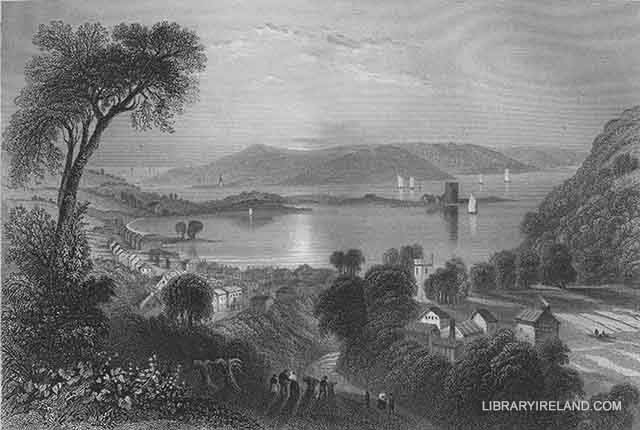Larne, County Antrim
We came very suddenly upon LARNE, and at the same moment that we turned over the edge of the deep glen on which it lies, the sun broke out upon the lovely bay and village below, illuminating the whole scene with a light such as a painter would have chosen. It was, indeed, a charming picture, and there was something Italian, no less in the soft vapoury light in which it was bathed, than in the position and aspect of the town. Island Magee lay in fine outline across the bay; and on a narrow tongue of land, called the curraàn, stood the ruins of an old castle, giving a romantic and foreign air to the entire scene.
Our car-driver descended too fast for us, though our breakfast was at the foot of the hill, and entering a narrow and old-fashioned street, he deposited us at a small and tidy inn. We ordered our breakfast, and started out for a stroll along the crescent of the little bay, and, hungry as we were, the impression made on us by its springlike softness and beauty, is among the most agreeable of our Irish recollections. Larne was anciently called Inver (which signifies lowly situated). Its trade was once of some importance, and even now it is not contemptible. The duties in the year 1810 amounted to £14,000, and there is still occasion to make it the residence of a collector. The chief articles of commerce here are rock-salt and limestone, both of which are exported in very considerable quantities. There is a good deal of cotton

